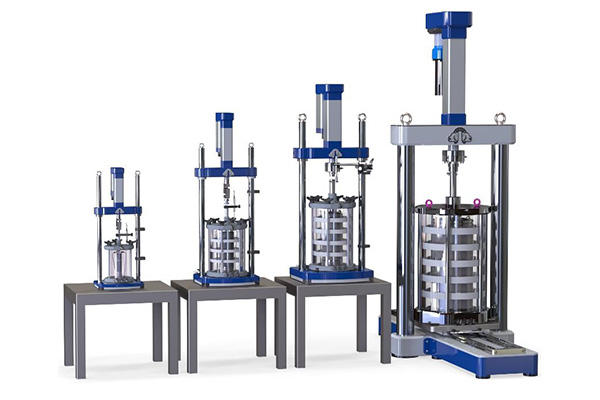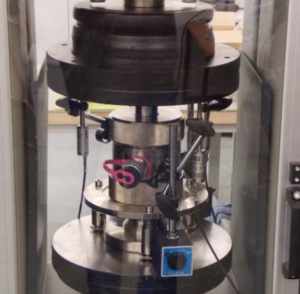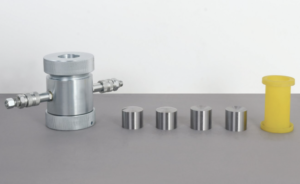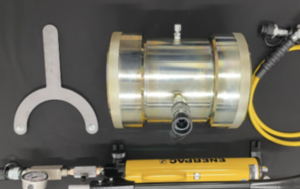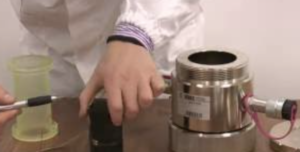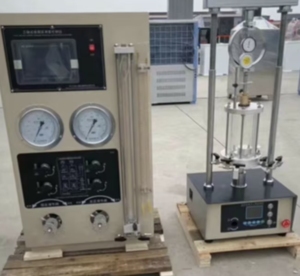Significance of the Standard
ASTM D4767 defines the Consolidated Undrained (CU) Triaxial Compression Test for saturated cohesive soils, used to determine shear strength and stress-strain behavior under undrained conditions. This test is essential for obtaining undrained shear strength and effective strength parameters (c′, φ′), which are key to foundation design, slope stability, and earth structure analysis. It simulates rapid loading on soils where drainage cannot occur, providing crucial data for short-term (undrained) stability and long-term (drained) behavior in geotechnical projects.ASTM D4767 defines the Consolidated Undrained (CU) Triaxial Compression Test for saturated cohesive soils, used to determine shear strength and stress-strain behavior under undrained conditions. This test is essential for obtaining undrained shear strength1 and effective strength parameters (c′, φ′), which are key to foundation design2, slope stability3, and earth structure analysis. It simulates rapid loading on soils where drainage cannot occur, providing crucial data for short-term (undrained) stability and long-term (drained) behavior in geotechnical projects.
Scope of Application
The CU triaxial test is applicable to saturated cohesive soils (e.g., clays and silts). It is primarily used for soils with low permeability, where pore pressure builds during loading. Typical applications include assessing foundation bearing capacity, embankment stability, and slope stability in clayey soils.
Table 1: Soil Types Applicable to ASTM D4767 CU Triaxial Testing
| Soil Type | USCS Classification | Applicability of CU Test |
|---|---|---|
| Clays (CL, CH) | High plasticity fine soils | Highly suitable: Generates pore pressures, yields undrained shear strength. |
| Clayey Silts | Fine-grained, low plasticity | Suitable if saturated: Effective for soils with low permeability. |
| Cohesionless Soils | Sands, gravels | Not suitable: Drains too quickly for undrained conditions. |
Types of Soils Suitable for CU Triaxial Testing:
- Clays (CH, CL): Highly suitable for CU testing as they are typically saturated and can develop significant pore pressures under undrained loading conditions.
- Silts (ML, MH): Can be tested if they are saturated and have low permeability. However, results can be more variable, as silts may have different consolidation and drainage behaviors.
- Organic Soils: While not ideal, organic clays and silts can also be tested if they are intact and saturated.
This test is most applicable in geotechnical projects where the soil’s behavior under rapid loading conditions4 is important. Cohesionless soils5 like sands and gravels are generally not tested using ASTM D4767 because their high permeability allows for rapid drainage, which conflicts with the undrained conditions required for the test.
Practical Applications
The results of the CU triaxial test are used in a variety of practical geotechnical engineering applications. The undrained shear strength (sₜu) and effective stress parameters (c′, φ′) derived from these tests are integral to the design and analysis of geotechnical structures. Below are some of the key practical applications:
-
Foundation Design: CU test data is crucial for evaluating bearing capacity on cohesive soils, particularly in the short-term undrained condition (e.g., immediately after construction). The undrained shear strength obtained from CU tests is used to calculate the allowable bearing capacity of foundations. This data helps determine the depth of the foundation and its ability to support load without failure.
-
Slope Stability Analysis: In projects involving embankments, slopes, or excavation sites in clayey soils, CU test results are used to evaluate short-term slope stability under undrained conditions. The undrained shear strength (sₜu) is used to assess the factor of safety for the slope immediately after loading. For long-term stability, effective shear strength parameters (c′, φ′) are used after pore pressures dissipate.
-
Earthworks and Retaining Walls: When designing earth dams or retaining walls, the shear strength of the underlying cohesive soils is critical for stability. The CU triaxial test provides the necessary data for calculating the active and passive earth pressures that affect these structures. The undrained shear strength is used for evaluating temporary stability during construction, while the effective strength parameters (c′, φ′) are used for long-term stability assessments.
-
Pore Pressure Measurement: The ability to measure pore water pressure during the test makes the CU triaxial test useful for understanding pore pressure development in soils under undrained conditions. This is crucial for projects where rapid loading could lead to increased pore pressure, resulting in soil failure or liquefaction in certain conditions.
-
Soil-Structure Interaction: The stress-strain data from the CU triaxial test can be used in numerical modeling to predict soil-structure interactions. By modeling the behavior of the soil under load, engineers can predict how the soil will behave in response to dynamic or cyclic loading scenarios, such as those encountered during earthquakes or rapid construction activities.
In summary, the CU triaxial test is a critical tool for determining the strength and behavior of saturated cohesive soils under undrained conditions. Its practical applications span a wide range of geotechnical engineering tasks, from foundation design and slope stability to the design of earth structures and soil-structure interaction modeling.
Conclusion
ASTM D4767 is an essential standard for geotechnical engineers, providing a method for measuring undrained shear strength and effective strength parameters of cohesive soils under controlled conditions. Its significance in assessing soil stability under short-term undrained loading and long-term consolidation makes it a key tool for foundation design, slope stability analysis, and earth structure design. By understanding the scope and practical applications of this test, engineers can make informed decisions to ensure the safety and stability of their geotechnical projects.
-
Understanding undrained shear strength is vital for assessing soil stability in construction projects. Explore this link for in-depth insights. ↩
-
Foundation design is crucial for structural integrity. Discover essential principles and best practices to ensure safe construction. ↩
-
Slope stability analysis is critical for preventing landslides. Learn about methods and tools used to ensure safe slopes in projects. ↩
-
Understanding soil behavior under rapid loading is crucial for safe and effective geotechnical design. Explore this link for in-depth insights. ↩
-
Cohesionless soils play a vital role in geotechnical projects. Learn more about their properties and testing implications. ↩

